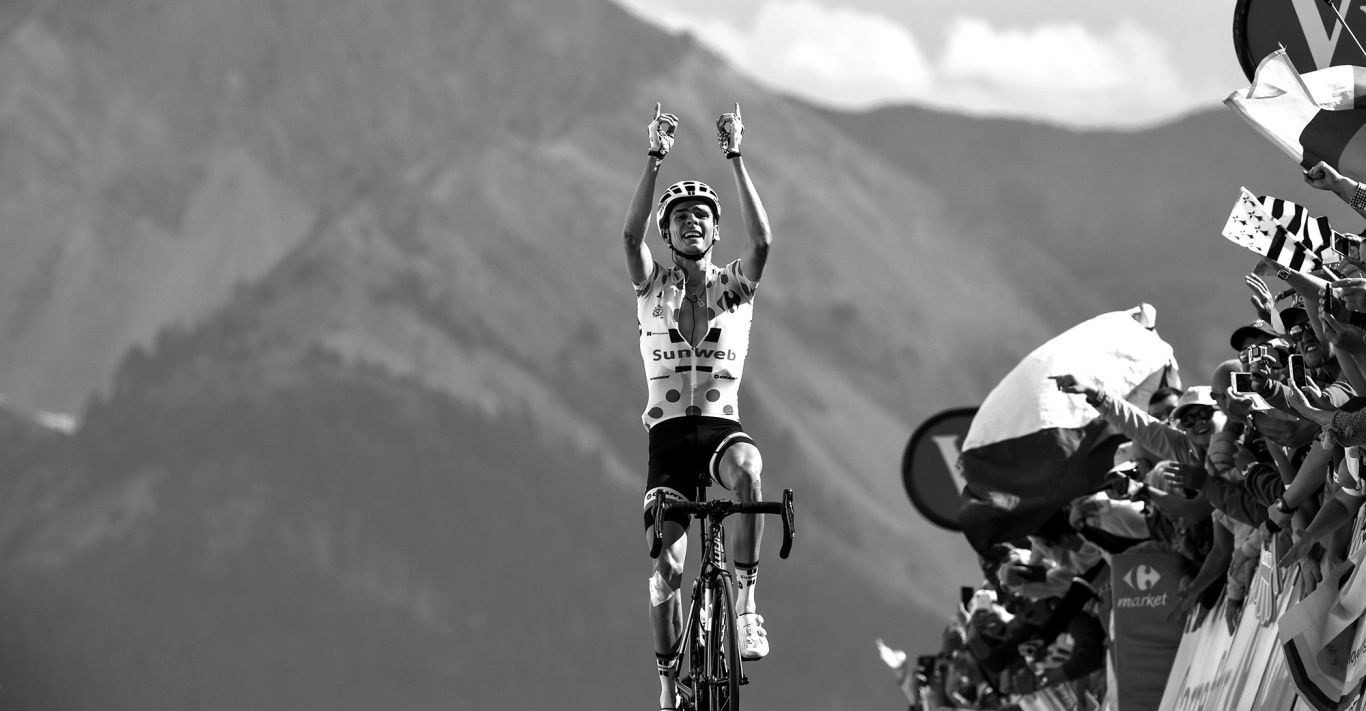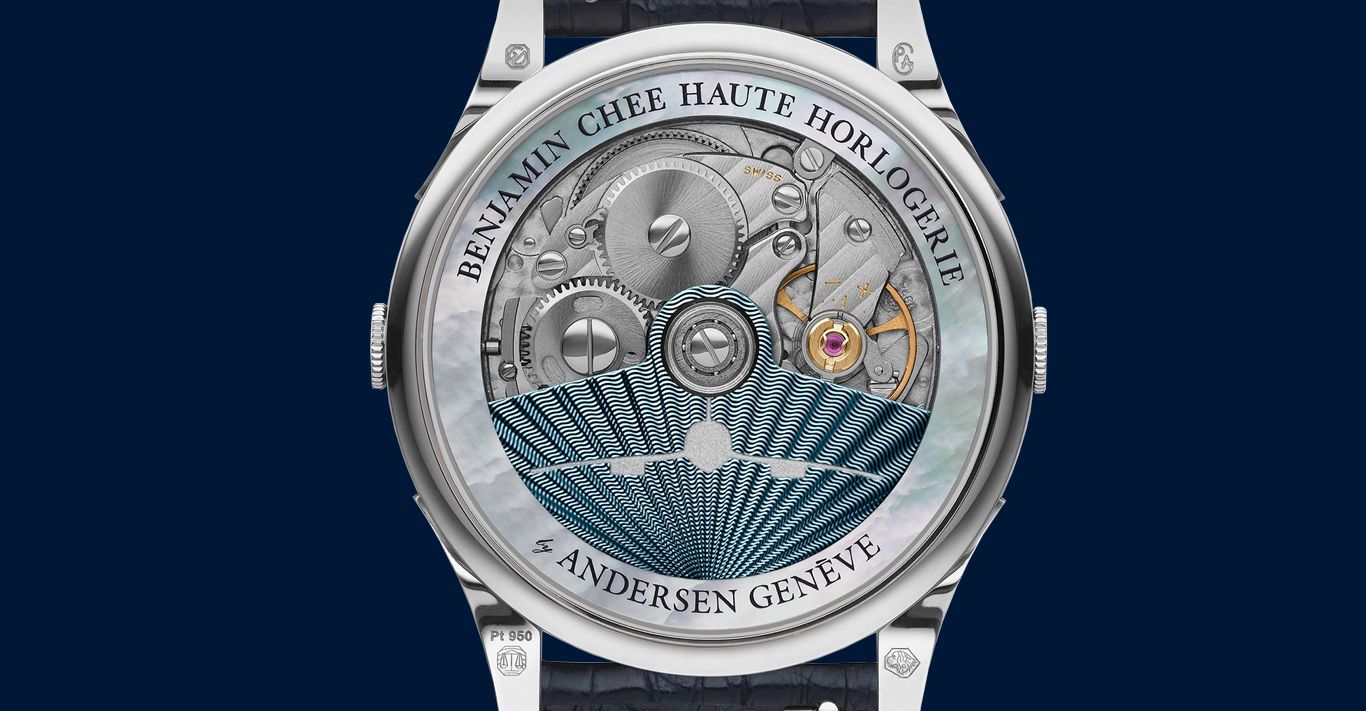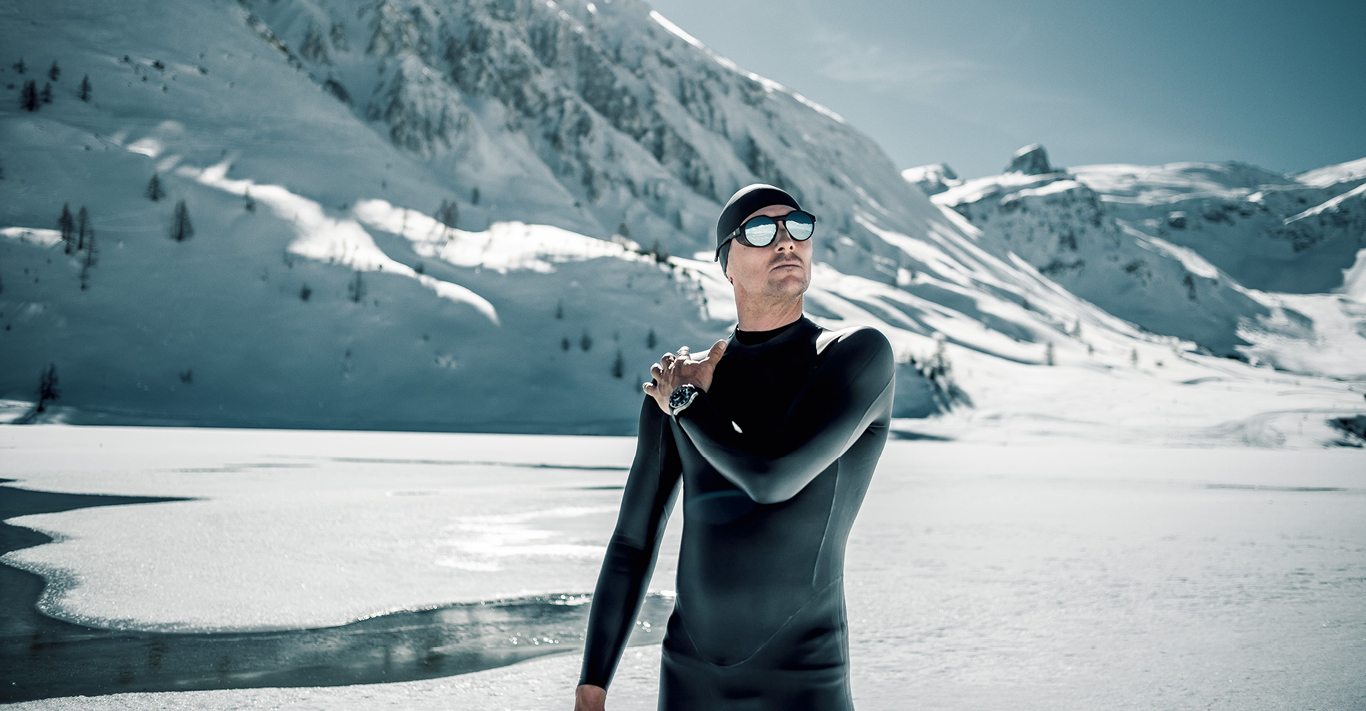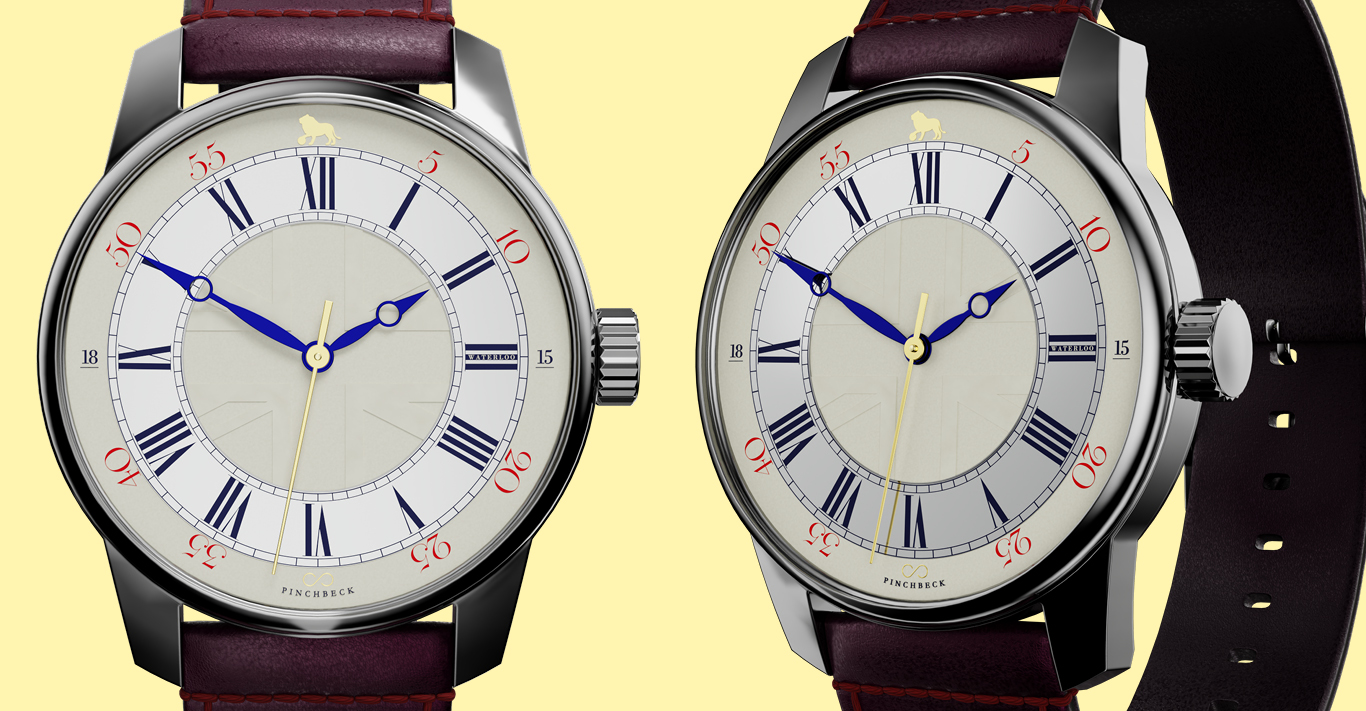WORDS
Simon Mills
In the lush green fields of Corgémont, nestled in the Swiss canton of Bern, horses run free among the buttercups and edelweiss. Cows throw chocolate-box poses against the Jura Mountains. Farmers go about their business with unhurried purpose. The sky is blue. The air, grand cru quality. This is a place where time passes in a series of languid and luxuriating, slow-motion moments. Where the marking of time seems irrelevant and inconsequential.
Inside the large industrial facility that houses the Swatch Group’s Swiss Timing headquarters, however, the experts from Tissot have other ideas. Dressed in matching team polo shirts, they hunch over laptops examining data, painstakingly testing and re-testing the micro-accuracy of their equipment. Looming above their heads is a large rectangular digital clock, its imposing, 10-inch-high numerals counting down the days, hours, minutes and seconds until their most critical time of the year: Le Grand Départ. The start of the Tour de France on 7 July 2018.
But as official timekeeper of Le Tour, it is finishes rather than starts that really matter to Tissot. Those crucial milliseconds between a stage winner at a sprint stage and the rider in second place. At stage seven of the Tour de France last year, for instance, two riders – Norway’s Edvald Boasson Hagen and Germany’s Marcel Kittel – crossed the finish line at what seemed to be – to the naked eye and the TV cameras at least – exactly the same time. Repeated slow-motion replays, with broadcast crews winding the footage back and forward frame by frame, proved thrillingly inconclusive. There was, decided the pundits and armchair fans, literally nothing between the two finishers and this would have to be announced as (that very rarest of things in pro cycling) a dead heat.
But the team of elite timing experts in Tissot’s state-of-the-art Swiss Timing truck knew better. With two tons of highly specialised equipment flashing into co-ordinated action, a meticulously choreographed combination of tactically positioned infrared photo cells, tracking devices, transponders, lasers and digital cameras capable of capturing 10,000 images per second enabled them to announce Marcel Kittel as the victor, by an extremely narrow margin.
The German had won by an almost imperceptible 0.0003 seconds. A solitary slice of stop motion imagery. The rubber on the tyre on Kittel’s front wheel had met the finish line first… just six millimetres – one single pixel – ahead of his rival’s. Within 30 seconds of the dramatic finale, Tissot had also submitted to the officials a general classification of the top finishers, updates on the green and yellow jerseys, the King of The Mountains contenders and news of any competitors lagging way behind the peloton and risking disqualification.
How does Tissot achieve such incredible accuracy under pressure? The magic bit of kit is Swiss Timing’s photo-finish camera. Instead of a conventional shutter it has a vertical slit of an aperture, only one pixel wide, which is carefully aligned with the finish line. Through the slit, the camera takes a 10,000 frames-per-second view of the finish as the riders flash through, each frame a perfectly rendered, single pixel-wide, time-lapse image. A picture of the finish line, stretched out, digitally defined and hyper real.
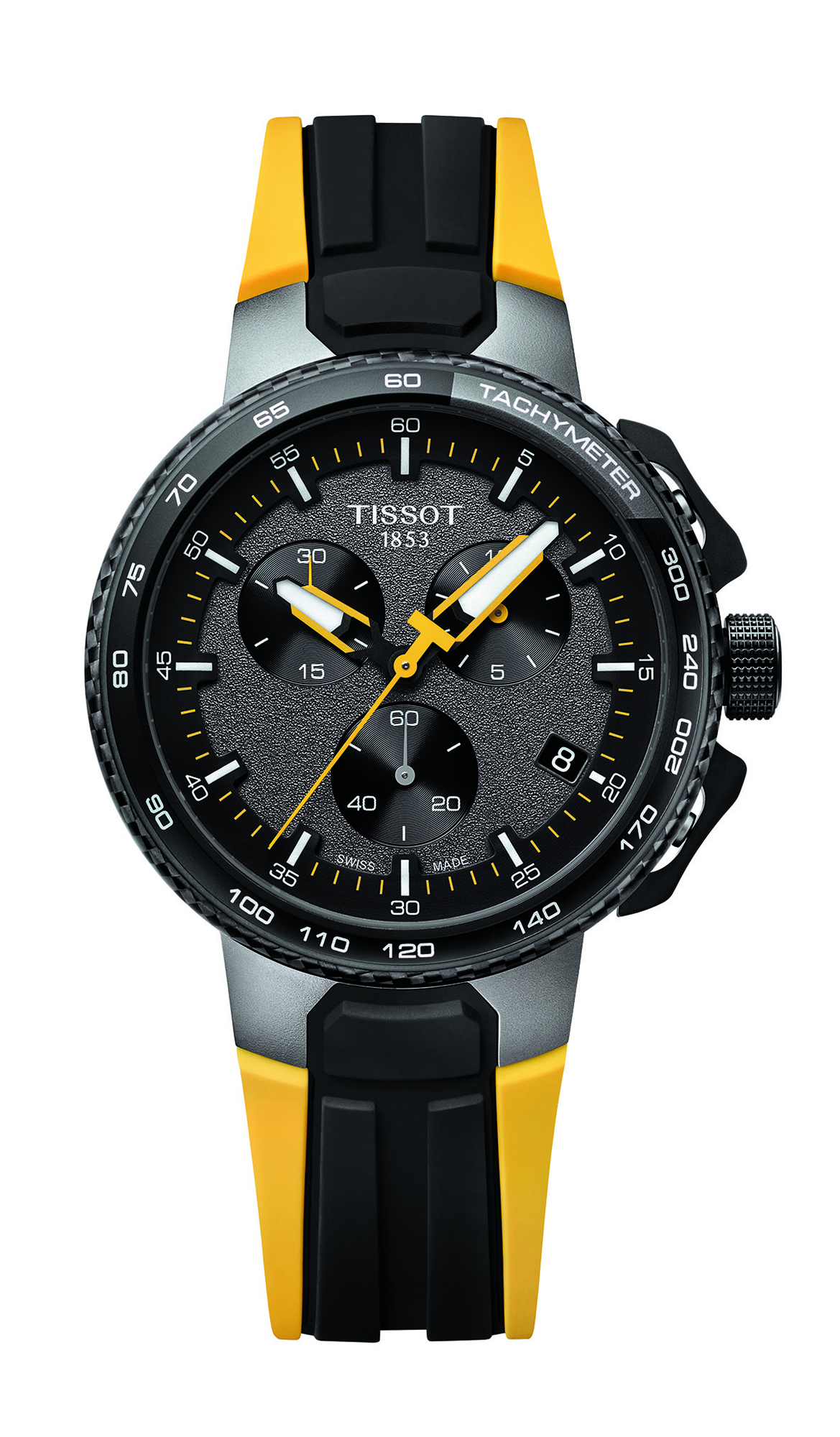
Pascal Rossier, head of sports operations and services at Swiss Timing for the Swatch Group, offers further explanation. ‘If you have bikes that are crossing the finish at a speed of more than 50, 60, 70 kilometres per hour (which is entirely possible these days) you are going to need to work to a precision of half a millimetre on the line. So, imagine you are at an office window and you close the vertical blinds so that there is just a small line of daylight between each shutter. Now, imagine a mobile object – a car or a bicycle – moving on the other side of the blind’s verticals. What you are going to see is thin slices of movement as the front wheel passes through those lines. It’s the same principle with the photo finish.’ Rossier and his team demonstrate the camera’s extraordinary capabilities under the Corgémont lab’s interior conditions. On a big screen above our heads, an oddly warped, distorted and exaggerated image of a test rider (your reporter) crossing the line appears – think of that cut-up image technique employed by French artist Jean Paul Goude in the 1980s applied to sport and you’ll get the idea. The camera is, explains Rossier, with a grin, a timing machine, ‘which is filming within the time… if that makes sense?’
The Tissot marque has been attuned to the marginal gains of professional cycling for decades. The official timekeeper of the Tour de France from 1988 to 1992, in 1995 Tissot began its affiliation with the UCI (International Cycling Union), becoming the official timekeeper of road, trail, mountain-bike and BMX cycling world championships and world cup cycling time trials. Tissot returned to Le Tour in 2016, and now manages the stopwatches at Paris–Nice, Paris–Roubaix, Paris–Tours, Critérium du Dauphiné and the Vuelta a España.
‘Really, timing a race is all about exposure and visibility – and the speed in which you can deliver the results,’ says Rossier. ‘You have the crowd, the global media, journalists, TV audiences and race professionals all waiting. You only get one shot. It has to be right.’ Over at Le Locle (Tissot’s 160-year-old base in the canton of Neuchâtel), designers have distilled Tissot’s vélo heritage and the elite timing team’s expertise into a range of handsome chronographs for cycling enthusiasts.
Details include a rubber strap design inspired by the head tube and fork profile of a racing bike. Pushers on the side of the case resemble brake levers and the asphalt-effect dial references a wheel and its spokes. The case back is cast with a rear cassette configuration, while the underside of the band is perforated with a bike chain tessellation designed to help air condition a rider’s wrist as he staggers up the Col du Galibier or Col de la Croix de Fer. The watch comes accented in red for La Vuelta and, naturellement, yellow for Le Tour (right).
‘We succeed because of our commitment to the sport of cycling,’ says Rossier. ‘We aren’t in this partnership for just a year or two. We have more than 400 employees and a huge research and development team. We have a long-term vision.’ Tissot has to stay ahead of the game, because, says Rossier, with each new edition of the Tour and the Vuelta they have a tendency to change the rules and invent new rankings. ‘So, we need to factor that into our preparation. We look ahead to the future, always innovating and improving.’

